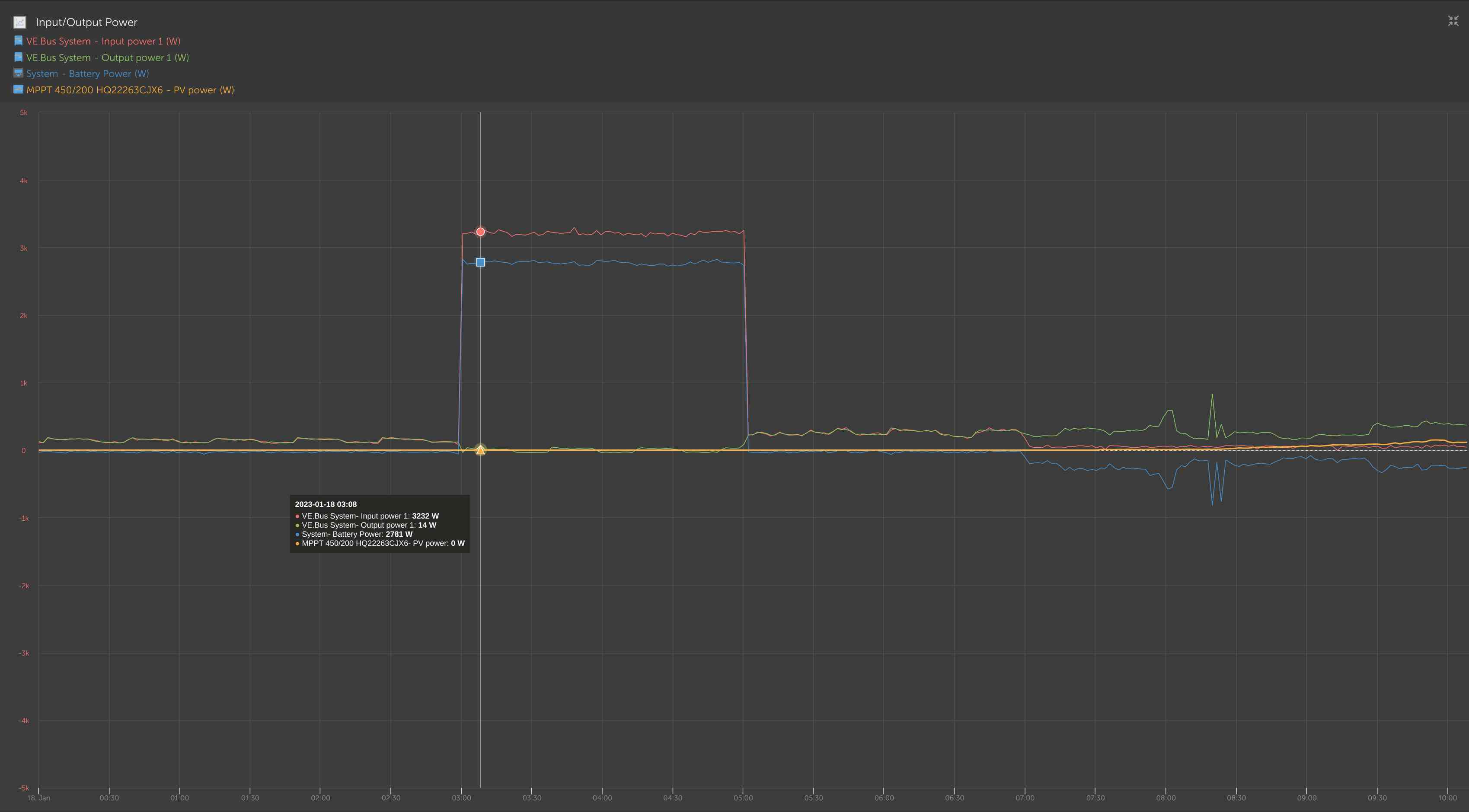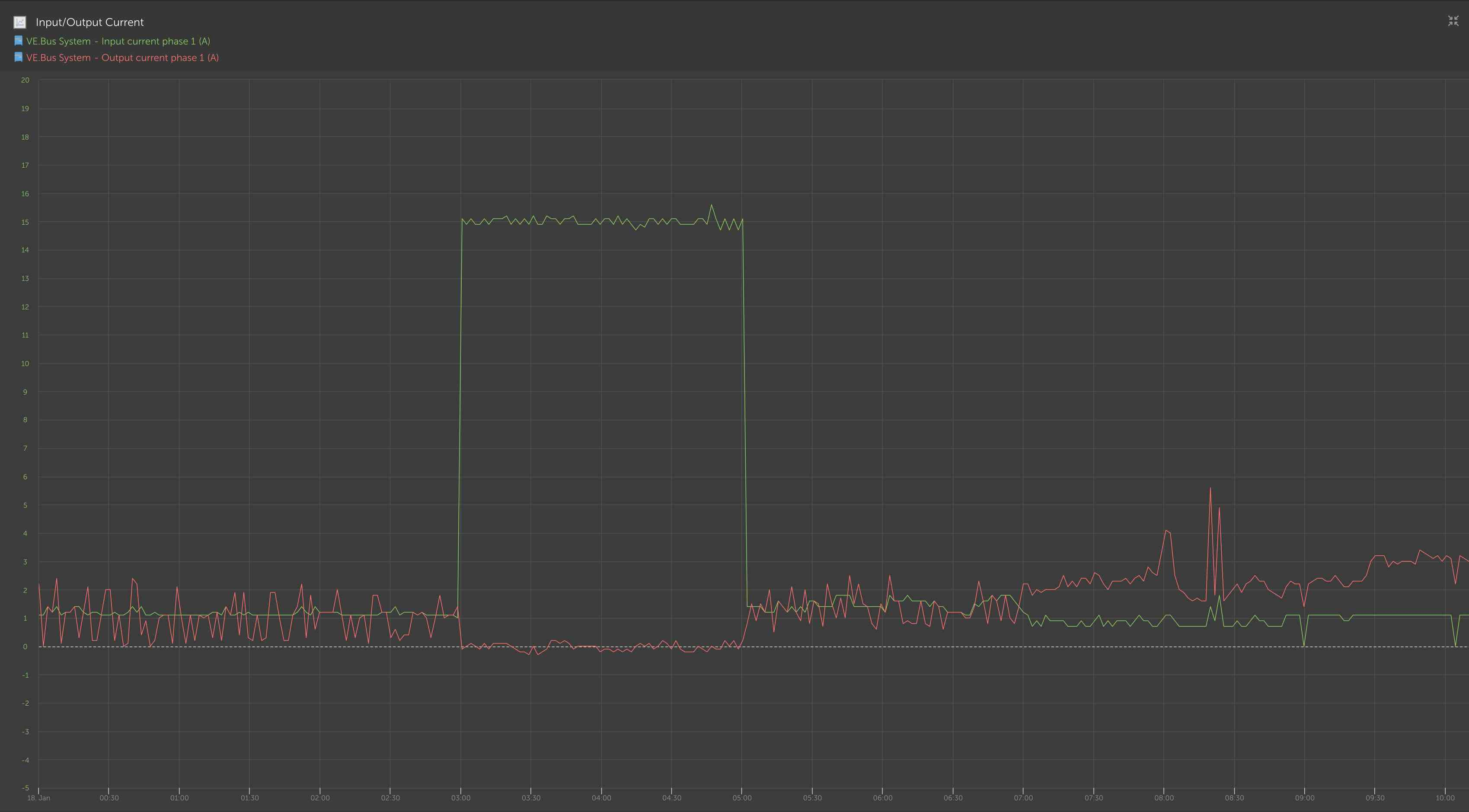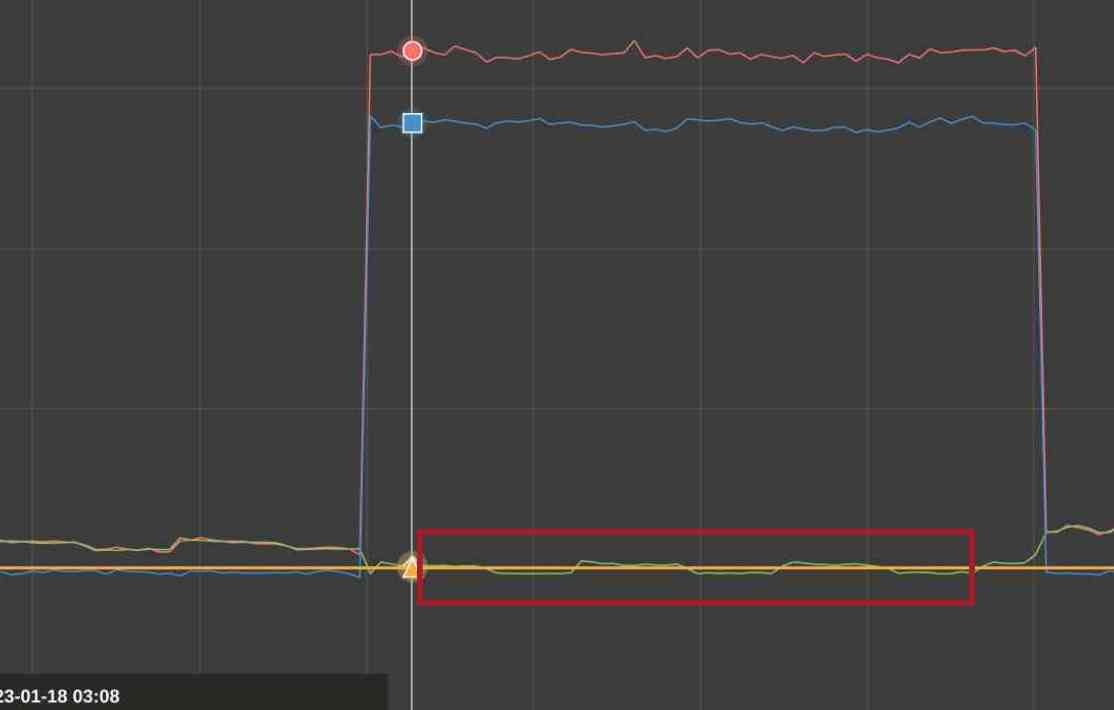I have Quattro-II 48/5000/70-2x50 + BMV-702 + SmarSolar MPPT 450/200 + LiFePO4 48V.
The 220V grid is connected to Quattro's AC In-1 and all load is connected to AC-Out-1 for now. There is no AC load bypassing the Quattro's AC Out.
I noticed that whenever I charge my battery from grid (both scheduled & unscheduled charge), I see that measured AC output power in VRM drops about 150w.
Which means that:
- If I have AC output power about 150w and start charging the battery from grid, the measured AC output current & power fluctuates below & above zero.
- If have output power about 1000w it will drop to about 850w. Which means that the inverter is capable of measuring output AC power while charging, but it is 150w off.
And the actual load does not change. This is measurement or calculation error.
Is this expected behavior? I can reproduce this consistently during day & night.
Also on the screenshot below you can see that input power is 3232w battery power measured by BMV-702 is 2781w. 3232-2781=451w. Output power is shown 14w but I know that it is fluctuates at about 150w.
If we do the math 2781/(3232-150)=0.90233614536 charger efficiency.
I have AC in limit set to 16A and grid charge power is about 3kW.
I did not limit inverter's output power via configuration. If I enable heavy load like 2kW and start charging, it charges at about 1kW not exceeding 16A which looks correct to me.
High resolution: https://community.victronenergy.com/storage/attachments/46894-1674030416850.png

High resolution: https://community.victronenergy.com/storage/attachments/46895-1674030427023.png


